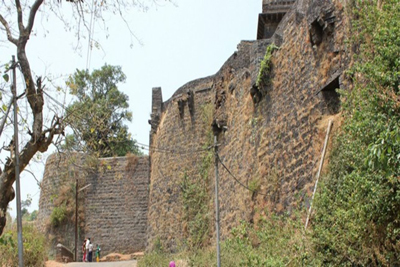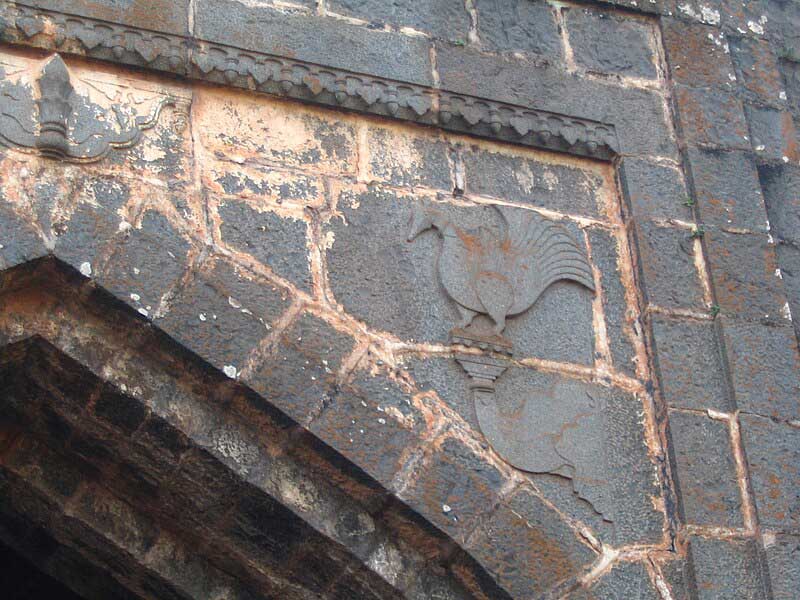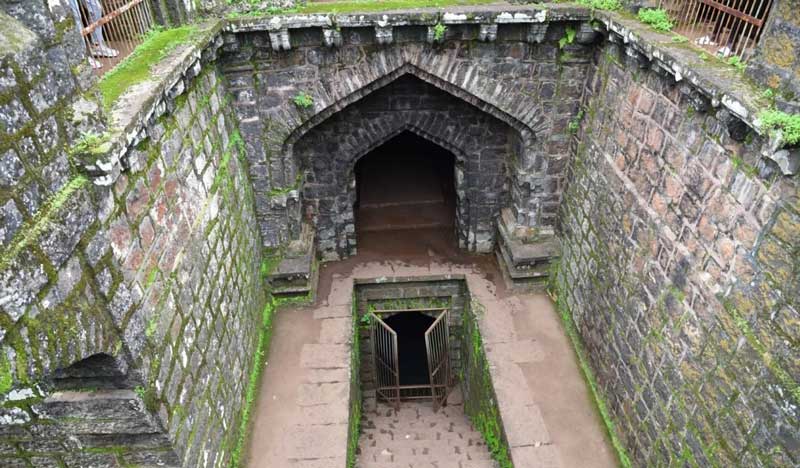
Situated at a distance of 22 km from Kolhapur in Maharashtra, Panhala Fort, also known as Panhalgad and Panhalla, is strategically located atop a hill, looking over a pass in the Sahyadri Mountain Range, aka The Western Ghats, which was once a major trade route from Bijapur to the coastal areas along the Arabian Sea. The entire stretch of the massive fort, dotted with parapets, ramparts, bastions and styled with motifs of different dynasties that ruled over it, is surrounded by 7 kilometres of insurmountable fortifications along with three double-walled gates. The fort was closely connected with Chhatrapati Shivaji, the famous Maratha ruler, who spent over 500 days here during his rule and also the site of his daring escape in 1660, during a siege by Bijapur forces led by Siddi Johar, an African slave mercenary serving the Bijapur Sultanate. The fort witnessed several battles in the Deccan region for a long period, involving the Marathas, Mughals, and even the British East India Company. Also called the Fort of Snakes for its zigzagged shape, the fort offers breathtaking vistas of verdant hills and lush picturesque valleys of Sahyadri from its perch atop its hill, and attracts tourists throughout the year.


Initially built between 1178 and 1209 AD by King Bhoja II, the last ruler of the Shilahare dynasty of Kolhapur, Panhala Fort is one of the 15 forts constructed by him, including the Satara Fort, also known as Ajinkyatara Fort, Bavda Fort or Gagangad, Bhudargad Fort, and the Vishalgad Fort. A copper plate found in Satara also evidences that Raja Bhoja II held his court in the Panhala Fort from 1191 to 1192 AD. Subsequently, the fort was successively passed into the hands of the Yadavas and the Bahamani Kings, after Raja Bhoja II was defeated by Singhana II, also known as Simhana II, one of the powerful rulers of the Yadava dynasty of Devagiri, aka Deogiri, around 1209-1210 AD. After that, in 1489 AD, Panhala was taken over by the Adil Shahi dynasty of Bijapur, who were instrumental in the fortification and constructing the strong ramparts and also the gateways of the fort that took a hundred years.

After the death of Afzal Khan, a famous general of the Bijapur Sultanate, in 1659, Chhatrapati Shivaji captured the fort from Bijapur, only to escape from the fort when Adil Shah II of Bijapur sultanate sieged it in July of 1660. However, Shivaji bounced back in 1673, when he captured the fort again, and consequently, it became the second-most important fort in the Maratha Empire after the Raigad Fort, one of the strongest fortresses on the Deccan Plateau. After the death of Shivaji in 1680, his son and successor, Sambhaji took control of the Panhala Fort, but the Mughals came to possess the fort in 1689, when Sambhaji was captured by the Mughal forces at Sangameshwar and was ultimately executed, marking a turning point in the Maratha-Mughal conflict. Although it was recaptured by the Marathas in 1692, Mughal Emperor Aurangzeb attacked it again in 1693, when Shivaji's younger son Rajaram I escaped disguised as a beggar, leaving his wife Tarabai in Panhala, who declared an independent kingdom of Kolhapur with Panhala as the capital in 1709.

The old structure of the Panhala Fort was mostly extended and modified by the Adil Shahi dynasty of Bijapur, who constructed the 7 km of fortification, along with three massive double-walled gates, displaying a blend of Islamic Persian and Deccan styles, and exhibiting the peacock motifs prominently visible on several structures, which reflect a broader Islamic artistic trend of the time. The fort is equipped with three entrances, among which the Teen Darwaza, the main entrance of the fort, is decorated with Persian inscriptions with carved motifs, along with an elaborate motif of Lord Ganesha, the favourite deity of the Marathas. Unfortunately, the second entrance, the Char Darwaza, located in the east and directly linked to a road leading to the fort, was demolished during the British siege, while the last entrance, Wagh Darwaza, is actually an illusion with a small courtyard beyond it, used to trap the intruders, who were destined to be killed.

The fort area contains several notable structures which include, among others, the Andhar Bavadi, Amberkhana, Dharma Kothi, Sajja Kothi, and Kalavanticha Mahal. However, perhaps one of the most important features of the fort is the Andhar Bavadi or the Hidden Well, the main water source for the fort dwellers. Commissioned by Mohammed Adil Shah, the three-storey structure of the Andhar Bavadi has winding staircases concealing a well from the possible invaders and protecting it from poisoning. The well also contains recesses in the wall for posting soldiers and hidden routes for emergency exits, leading outside the fort. The Amberkhana or the warehouses, situated in the heart of the fort and built by King Bhoja II, are another important feature of the Panhala Fort. It included three rectangular buildings, namely Ganga, Jamuna, and Saraswati, among which the Ganga Kothi was the largest, with the capacity of storing 25,000 khandis, equivalent to 18,662,000 kgs of grain. Located next to the three main granaries constituting the Amberkhana, the 35 feet high stone building of the Dharma Kothi, measuring 58 feet by 48 feet, served as an additional granary.


The one-storey building of Sajja Kothi, built by Ibrahim Adil Shah of Bijapur, was used to serve a completely different purpose. Displaying Mughal style of architecture, and overlooking the lush green Waranna Valley, with its balconies hanging over the ramparts of the fort, it was used for closed meetings of the top circle of ministers, and also for keeping a vigilant watch over the valley for any sign of trouble. Unfortunately, Kalavanticha Mahal, located on the east side of the fort close to the rampart, and also called Nayakini Sajja, is now complete wreckage, except for the traces of ornamental work on its ceiling. It was basically the terrace room for the courtesans, and was once used by the Bahmani Sultanate as a Rang Mahal, residence for the ladies of the court. Nonetheless, the palace of Tarabai is still in good condition, and now houses a school, a boys' hostel, and several government offices. Apart from the structures, as mentioned above, the complex of the Panhala Fort houses several temples, like the Mahakali temple, Someshwar temple, Ambabai Temple, and the distinctive Sambhaji temple, which was built on the cremating spot of Sambhaji II. However, it also contains the mausoleum of Jijabai, situated opposite the tomb of her husband, Sambhaji II.